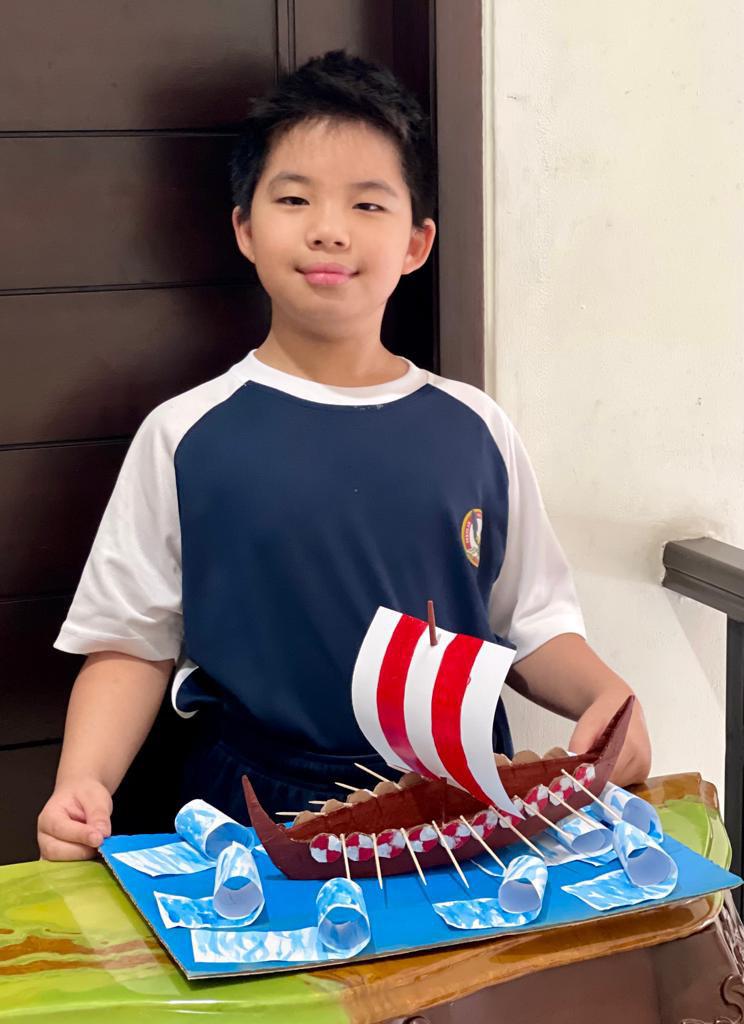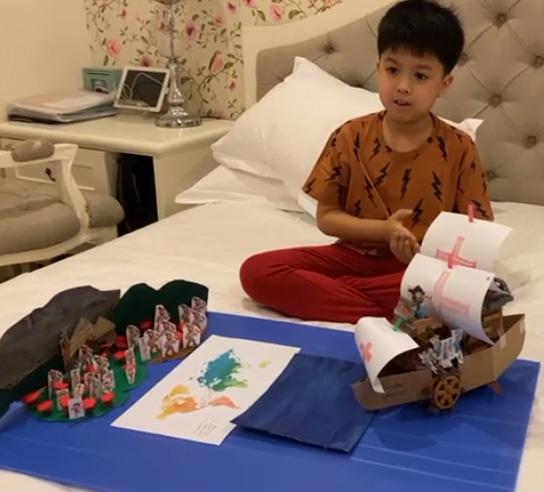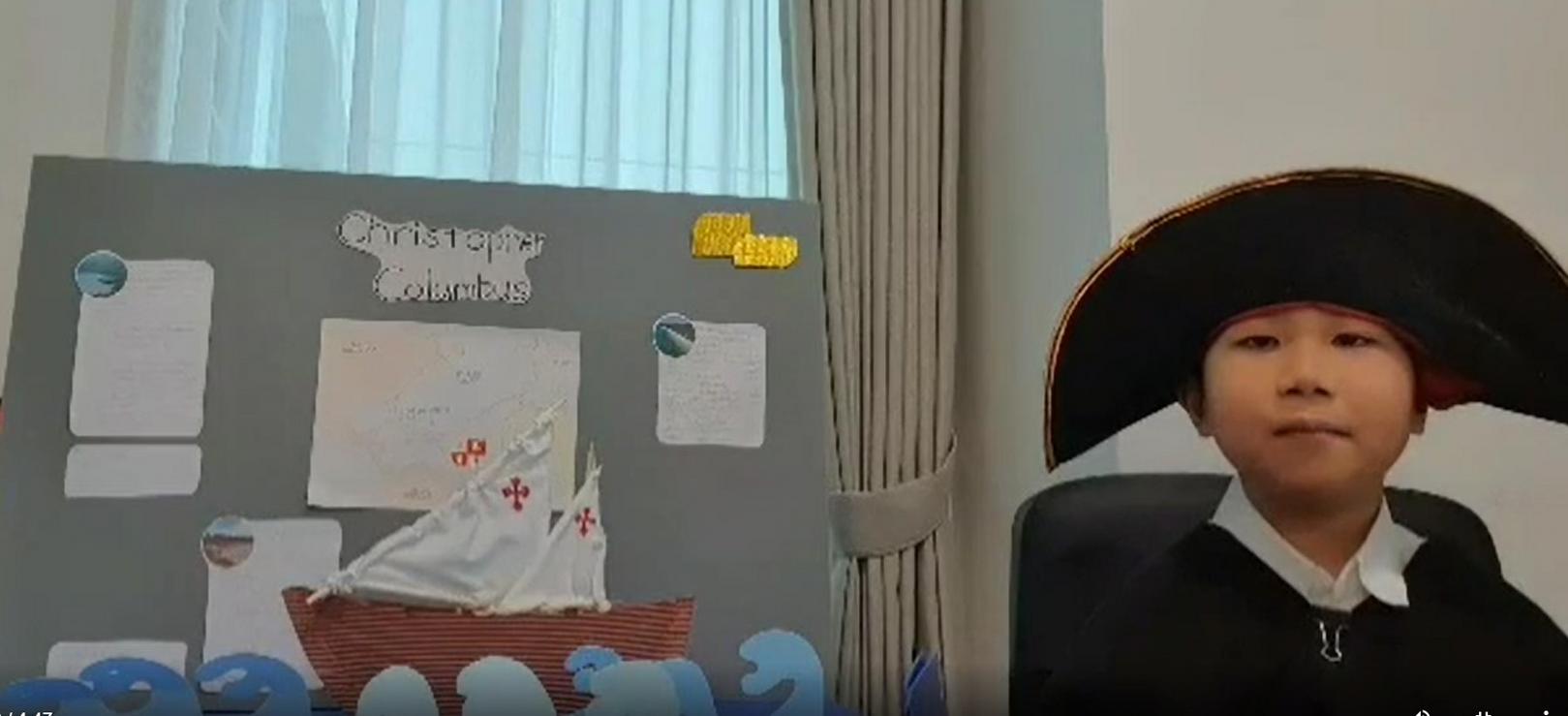
5 minute read
Grade 4
Where We Are in Place and Time
by Ibu Irene Tjandramihardja
Advertisement
In Grade Four, our second unit of inquiry explores a topic, entitled “Where We Are in Place and Time”. The students have learned about some explorations through the viewpoints of forms, causations, and perspectives. They have discussed that during the explorations, the explorers encountered challenges along the way. The explorers had to go through vast oceans and the fierce storms. Quite often, they were confronted with raging rivers that they needed to cross, apart from the severe weather conditions.
The students have also looked at the motivations of the explorations. Some explorers sailed the seas to find new lands, gold, and spices. Some others, like the missionaries, would like to spread the Gospel and bring peace. The Fourth Graders have enjoyed the sharing moments from the two guest speakers: Wes and Esther Dale. They are both missionaries from Australia and have lived in the interior village of Mamit, Papua for many years.
As our students delved into “the Age of Exploration” (the period of time when European explorers set out on voyages of discoveries and trades), our students have discovered that the interactions with the indigenous people and their cultures often resulted in some kind of “oppression and exploitation”. This perspective of injustice has made us evaluate the actions of the explorers.

Students’ Reflections
1. Isaac Alexander

What I like about this second unit is that I had to make a 3D model for my final task. I chose to make a Viking longship. It was not so easy to make the Viking longship. I had to make it out of a cardboard and painted the ship so that it looked almost similar to the real ship. What I have also learned from this unit is that Leif Eriksson also travelled to North America, which is now known as Canada, and made a brief settlement there. Leif’s father was also an explorer who left Norway and started the settlement in Greenland.
2. Jayden Djajasaputra

For my summative task, I chose Christopher Columbus. He was an interesting explorer. Christopher Columbus wanted to find the shorter way the eastern Asia by crossing the Atlantic Ocean. He thought that he had reached the intended area when he arrived on an island in the Caribbean Sea. Columbus’ discovery of the new land opened the opportunities for the Europeans to come and settle in the Americas (the North America and South America). When Columbus met with the Taino (the indigenous people who lived in the Caribbean Islands of Cuba, Jamaica, Hispaniola, and Puerto Rico), he treated them well. However, their good relationships turned bad because Columbus forced them to mine gold for him and the Taino were enslaved. At the end of this unit, I learned that we need to see the perspectives of other people. I should also be kind to other people and treat them well.
3. Audrey Sapphire Pangestu

I chose to do some research about Mary Kinsley who was both a writer and an explorer. She traveled to Africa. Mary Kinsley inspired other women to not easily give up because she thought whatever men could do, women could do, too. She also shared her knowledge to the European people about the new species of freshwater fish that she found in Africa during her exploration. In her book, she also wrote about the African culture and how the African people were treated unfairly at that time. Mary Kinsley never gave up on her dreams, even though other people laughed at her. That’s why Mary Kinsley inspired me not to give up when I face difficulties.
4. Mark Mann

This second unit was fun because I learned about several explorers. In this unit, I could pick my favorite explorer. The teachers did not decide the explorer that I had to do for the summative assignment, and I chose Leif Eriksson for my final project because once I read a book with my Dad about the Viking adventure and this book inspired me to know more about the Vikings. That’s why I chose to do some research about Leif Eriksson. The second reason I picked Leif Eriksson is because Leif explored and landed in Newfoundland, Canada. This is the country where I am from. I also did a lot of interesting activities in this unit such as making a boat and I had to pretend to be an explorer and planned everything that I needed for an exploration.
5. Segang Lee

I chose to learn more about Christopher Columbus. I am interested in knowing how he interacted with the indigenous people (the Tainos) during his exploration. His actions were not always nice to them. In my perspective, Columbus had to respect the Tainos and their culture.










